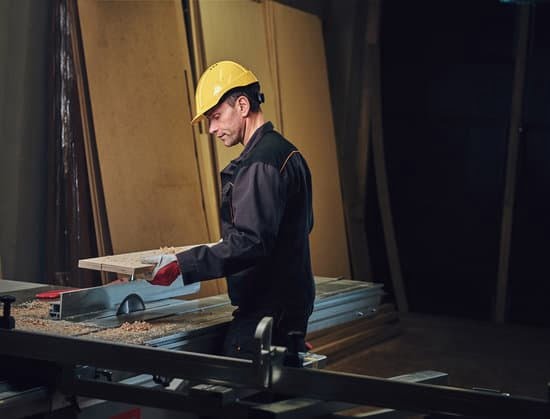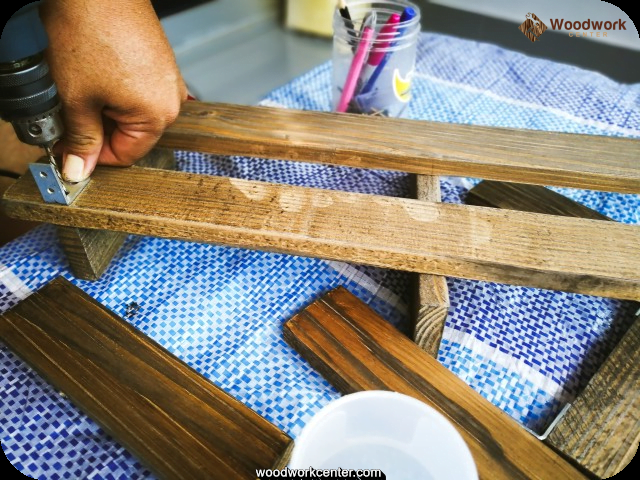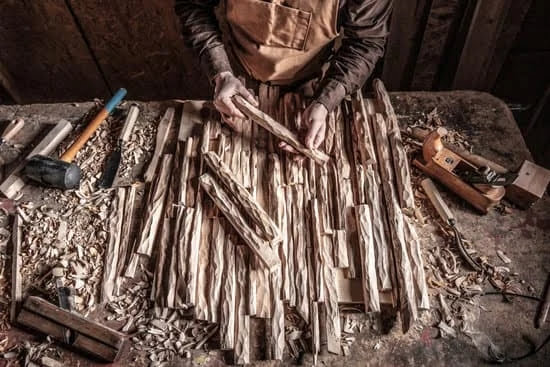Woodworking is an incredibly rewarding skill that children can learn and develop at a young age. Not only does it provide them with practical skills, but it also helps to foster creativity, problem-solving abilities, and a sense of accomplishment. Teaching children woodworking can be a wonderful way to introduce them to the world of craftsmanship while instilling important life skills.
Woodworking offers numerous benefits for children’s development. It promotes hand-eye coordination, fine motor skills, and spatial awareness as they learn to measure, cut, shape, and assemble pieces of wood. This hands-on approach allows children to engage their minds and bodies as they use tools and work with materials. Moreover, woodworking provides a sense of fulfillment and pride in creating something tangible from scratch.
Safety is paramount when teaching children woodworking. Before embarking on any projects or activities, it is imperative to establish safety measures that ensure their well-being. Appropriate protective gear, such as goggles and gloves, should be worn at all times. Tools should be carefully chosen based on the child’s age and ability level, ensuring they are durable yet easy to handle. Additionally, setting clear rules and boundaries in the workshop environment is essential to prevent accidents.
By imparting basic woodworking skills to children through guided instruction and hands-on experience, they can gradually develop their abilities in this craft. Starting with simple projects such as building a birdhouse or a small treasure box allows them to grasp foundational skills like measuring, sawing, sanding, and assembling pieces together. A step-by-step guide tailored for children ensures that they feel supported while learning at their own pace.
What Safety Measures to Take When Teaching Children Woodworking
Woodworking can be an exciting and rewarding skill to teach children, but it is important to prioritize safety throughout the process. By taking the necessary safety measures, you can ensure that your child has a positive and incident-free experience with woodworking. Here are some essential safety tips to keep in mind when teaching children woodworking:
- Provide proper safety gear: Before your child begins any woodworking project, make sure they have the appropriate safety gear. This includes safety glasses or goggles to protect their eyes from flying wood chips or debris, ear protection to reduce the noise level, and sturdy closed-toe shoes.
- Teach safe tool handling: It is crucial to educate children on how to safely handle and use tools. Start by explaining the purpose of each tool and demonstrating the correct way to hold them. Emphasize the importance of keeping their fingers away from blades and sharp edges. Encourage them to always handle tools with care and avoid horseplay or distractions while using them.
- Create a clear workspace: Before starting any woodworking activity, establish a clean and organized workspace for your child. Remove any unnecessary tools or materials that could cause accidents or distractions. Make sure there is enough space for them to comfortably move around without tripping over objects.
To further enhance safety measures when teaching children woodworking, consider implementing these additional precautions:
- Always supervise your child: While it is important to encourage independence and problem-solving skills in children, adult supervision is crucial during woodworking activities. Ensure that you are present at all times to provide guidance, answer questions, and intervene if necessary.
- Use age-appropriate tools: When introducing woodworking tools to children, select ones that are suitable for their age and abilities. Avoid using complex power tools that may be too advanced or dangerous for young learners. Instead, stick with hand tools such as hammers, screwdrivers, chisels, and coping saws designed specifically for kids.
By taking these safety measures into account, you can create a safe and enjoyable woodworking environment for children to learn and grow their skills. Remember, safety should always be the top priority when teaching children woodworking.
Essential Tools for Children to Start Woodworking
Woodworking can be a rewarding and enriching skill for children to learn. Not only does it teach them practical skills, but it also helps develop their creativity and problem-solving abilities. When starting out with woodworking, it is important to have the right tools. Here are some essential tools for children to start woodworking:
Safety should always come first when teaching children woodworking
A measuring tape is an essential tool for accurate woodworking
A child-friendly saw will allow them to cut wood into different shapes and sizes
Sanding blocks help smooth out rough surfaces and give the finished project a polished look
Children will need hammers to drive nails into wood or make adjustments to their projects
Screwdrivers are necessary when working with screws or assembling parts together using fasteners
: Clamps hold pieces of wood securely in place while children work on their projects
As children gain more experience and confidence in woodworking, you can gradually introduce them to additional tools like chisels, drills, and planes. It is important to provide proper guidance and supervision when children use unfamiliar tools to ensure their safety.
By having the essential tools needed for woodworking, children can begin to explore their creativity and develop fundamental woodworking skills in a safe and controlled environment.
Step-by-Step Guide on How to Teach Children Basic Woodworking Skills
Teaching children basic woodworking skills can be a fun and rewarding experience. Not only does it allow children to develop their creativity and problem-solving skills, but it also teaches them valuable life lessons such as patience, perseverance, and attention to detail. In this section, we will provide a step-by-step guide on how to teach children these skills in a safe and effective manner.
- Start with Safety: Before diving into the woodworking process, it is crucial to establish safety measures. Teach children the importance of wearing protective gear such as safety goggles, gloves, and aprons. Show them how to properly use tools and emphasize the need for adult supervision at all times. Create clear rules about handling sharp objects and machinery, as well as maintaining a clean and organized workspace.
- Introduce Essential Tools: Familiarize children with basic woodworking tools such as hammers, nails, screwdrivers, sandpapers, rulers, saws (preferably mini saws designed for kids), clamps, and wood glue. Demonstrate how each tool functions and explain when and how they should be used. It is important to choose child-friendly tools that are lightweight, easy to handle, and have rounded edges for maximum safety.
- Start with Simple Projects: Begin teaching woodworking skills by starting with simple projects that match the child’s age group and skill level. This could include building a birdhouse, creating a picture frame, or making a small wooden toy. Walk them through each step of the project, allowing them to participate actively in measuring wood pieces, joining components together using nails or screws (with adult assistance), sanding rough edges or surfaces until smooth using sandpaper.
Providing children with clear instructions and guidance throughout the learning process will not only ensure their safety but also help build their confidence in woodworking skills. By starting with simple projects before progressing to more complex ones gradually; children will be able to develop essential woodworking techniques while enjoying the process.
| Safety Measures | Essential Tools | Beginner Projects |
|---|---|---|
| – Wearing protective gear: safety goggles, gloves, aprons | – Hammers | – Birdhouse |
| – Adult supervision at all times | – Nails/screws | – Picture frame |
| – Rules for handling sharp objects and machinery | – Screwdrivers | – Small wooden toy |
Fun Woodworking Projects for Children to Start With
Woodworking can be a fun and rewarding activity for children to engage in. It allows them to express their creativity, develop problem-solving skills, and learn how to work with their hands. Starting with simple projects is a great way to introduce children to woodworking and build their confidence in using tools and working with wood. Here are some fun woodworking projects that children can start with:
- Birdhouse: Building a birdhouse is a classic woodworking project for children. It teaches them basic measuring, cutting, and assembly skills. Children can personalize their birdhouses by painting or decorating them, making it even more enjoyable.
- Picture frame: Making a picture frame is another great project for children to start woodworking. They can learn how to measure and cut wood, as well as assemble the pieces using nails or screws. Children can select their favorite photo or artwork to display in the frame once it’s finished.
- Pencil holder: Creating a pencil holder is a practical project that children can use on their desks or as gifts for friends or family members. They will learn how to measure, cut, and join pieces of wood together while creating a useful item that showcases their craftsmanship.
These projects provide children with opportunities to learn essential woodworking skills while having fun in the process. It’s important to guide them through each step of the project, emphasizing safety measures and proper tool usage.
| Woodworking Project | Popularity Among Children |
|---|---|
| Birdhouse | High |
| Picture Frame | Medium |
| Pencil Holder | High |
These projects can serve as a starting point for children to develop their woodworking skills. As they gain more experience and confidence, they can progress to more complex projects that challenge their abilities. It’s important to adapt the difficulty level of projects based on the age and skill level of the child to ensure they have a positive woodworking experience.
How Woodworking Can Help Improve Children’s Creativity and Problem-Solving Skills
Woodworking is not just a practical skill, but it can also have a significant impact on children’s creativity and problem-solving skills. Engaging in woodworking activities allows children to explore their imagination, think critically, and develop their problem-solving abilities. Here’s how woodworking can help improve children’s creativity and problem-solving skills:
Encourages Innovative Thinking
One of the key benefits of woodworking for children is that it encourages innovative thinking. Woodworking projects often require children to come up with creative solutions to build, assemble, and decorate their creations. As they engage in hands-on activities, they learn to think outside the box and explore different possibilities. This process sparks their imagination and helps nurture their ability to generate new ideas.
Develops Problem-Solving Skills
Woodworking inherently involves solving problems at various stages of the project. From measuring and cutting wood to assembling pieces together, children encounter obstacles that require logical thinking and problem-solving skills. They learn how to analyze the situation, identify the challenge, brainstorm potential solutions, and implement the best approach. Through trial and error, children gain resilience and perseverance as they overcome obstacles in their woodworking projects.
Fosters Spatial Awareness
Woodworking requires an understanding of spatial relationships as children work with three-dimensional objects and materials. By manipulating different wooden pieces in their projects, children develop a sense of spatial awareness; they learn about proportions, dimensions, symmetry, balance, and design aesthetics. These concepts enhance their ability to visualize ideas in three dimensions and apply this knowledge in other areas of life.
Tips for Encouraging Children to Stay Engaged and Motivated in Woodworking
Woodworking can be a fun and rewarding activity for children, but it’s important to keep them engaged and motivated throughout their woodworking journey. Here are some tips to help you encourage children to stay enthusiastic about woodworking:
Set achievable goals
One way to keep children motivated in woodworking is by setting achievable goals. Break down the project into smaller tasks that they can complete successfully, and celebrate each milestone they reach. This will give them a sense of accomplishment and motivate them to continue working on their projects.
Incorporate their interests
Another way to keep children engaged in woodworking is by incorporating their interests into the projects. Whether it’s building a birdhouse, designing a toy car, or creating a picture frame, allowing them to choose projects that align with their passions will make woodworking more meaningful and exciting for them.
Provide variety
To prevent boredom and maintain interest, it’s important to provide children with a variety of woodworking projects. Introduce different techniques, materials, and tools to expand their skillset and offer new challenges. This will keep the experience fresh and exciting for them.
Offer praise and encouragement
Positive reinforcement goes a long way in keeping children motivated. Be sure to acknowledge their hard work, creativity, and progress regularly. Encourage them with kind words, constructive feedback, and praise for their achievements. This will boost their confidence levels and make them more eager to continue exploring woodworking.
Allow for personalization
Give children the freedom to personalize their projects by adding unique touches or embellishments. Whether it’s painting, staining, or carving designs onto the wood, allowing them to express themselves creatively will make the woodworking experience more enjoyable and personal for them.
By implementing these tips, you can help children stay engaged and motivated in woodworking. Remember to foster a supportive and positive learning environment, where mistakes are seen as opportunities for growth and experimentation is encouraged. With your guidance and encouragement, children can develop a lifelong love for woodworking and unlock their creative potential.
How to Create a Safe and Inspiring Workshop for Teaching Children Woodworking
Creating a safe and inspiring workshop environment is essential when teaching children woodworking. By following certain guidelines and taking precautions, you can ensure that the children have a positive experience while learning this valuable skill.
Firstly, it is important to establish clear safety rules and procedures in the workshop. Children should be taught to wear appropriate safety gear such as goggles, gloves, and ear protection. They must also understand the importance of using tools correctly and respecting their power. Emphasize the significance of keeping fingers and hands away from sharp edges and moving parts.
The organization and layout of the workshop are also crucial for maintaining safety. Ensure that there is enough space for each child to work comfortably without being crowded or risking collisions with other students or equipment. Tools should be properly stored when not in use, preventing any accidental contact or injuries. Additionally, make sure the work area is well-lit to avoid accidents due to poor visibility.
Creating an inspiring atmosphere in the workshop can greatly enhance children’s productivity and motivation. Use vibrant colors, posters featuring woodworking projects, and materials that evoke creativity. Encourage children to share their ideas and provide praise for their efforts. Displaying completed projects from previous students can serve as inspiration for new woodworking enthusiasts.
Common Mistakes to Avoid When Teaching Children Woodworking
Woodworking is an excellent skill to teach children, as it provides countless benefits for their development and growth. However, it is important to be aware of common mistakes that can hinder their progress and potentially jeopardize their safety. By avoiding these mistakes, you can ensure a positive and successful woodworking experience for your child.
One of the most common mistakes when teaching children woodworking is underestimating the importance of safety measures. It is crucial to prioritize safety at all times by providing appropriate protective gear, such as safety goggles and gloves, and teaching proper handling techniques for tools. Additionally, taking the time to explain the potential risks involved in woodworking can help children understand why safety should always be a priority.
Another mistake to avoid is overwhelming children with complex projects or techniques right from the start. It is important to remember that children are still developing their fine motor skills and may need more guidance and support compared to adults. Start with simple projects that allow them to practice basic woodworking skills and gradually introduce more challenging tasks as they gain confidence and proficiency.
Lastly, do not forget the importance of patience and encouragement. Woodworking can be a frustrating process at times, particularly for beginners. Children may make mistakes or face difficulties along the way, so it is important to offer support and reassurance instead of getting discouraged or criticizing their efforts. By creating a positive environment and fostering a sense of accomplishment, you can motivate your child to stay engaged in woodworking.
In conclusion, teaching children woodworking can be an incredibly rewarding experience for both you and your child. By avoiding common mistakes such as neglecting safety measures, starting with overly complex projects, or lacking patience and encouragement, you can ensure a safe and fruitful journey into the world of woodworking for your child. Embrace their creativity, nurture their problem-solving skills, and watch them develop into skilled woodworkers who take pride in their creations.
Frequently Asked Questions
What are carpentry skills for kids?
Carpentry skills for kids refer to the basic set of abilities and knowledge that children can acquire in order to work with wood and tools safely and effectively. These skills usually include measuring, sawing, drilling, sanding, and assembling wood pieces together.
Learning carpentry skills at a young age can help children develop hand-eye coordination, spatial awareness, problem-solving abilities, and creativity. It can also instill a sense of accomplishment and pride as they complete woodworking projects.
How old do you have to be to start woodworking?
There is no definitive age requirement to start woodworking as it largely depends on the child’s maturity level, motor skills, and ability to follow safety guidelines. However, most experts suggest that children are typically ready to begin woodworking around the age of seven or eight.
At this age, they have usually developed enough dexterity to handle basic tools under adult supervision and are more likely to understand safety instructions properly. It is important to note that parental guidance is essential regardless of the child’s age when starting woodworking activities.
How do I learn basic woodworking skills?
Learning basic woodworking skills can begin by understanding the fundamentals of working with wood and gradually building upon those principles through practice and experience. To start learning woodworking skills, one can search for local community classes or workshops focused on introductory carpentry lessons for beginners. There are also numerous online resources available such as video tutorials or websites offering step-by-step instructions on basic woodworking techniques.
It can be helpful to start with small projects like building a birdhouse or simple box to gain confidence before progressing onto more complex tasks. Additionally, seeking guidance from experienced woodworkers or mentors in the craft can provide valuable advice and insights for those looking to learn woodworking skills from scratch.

Hi everyone! I’m a woodworker and blogger, and this is my woodworking blog. In my blog, I share tips and tricks for woodworkers of all skill levels, as well as project ideas that you can try yourself.





